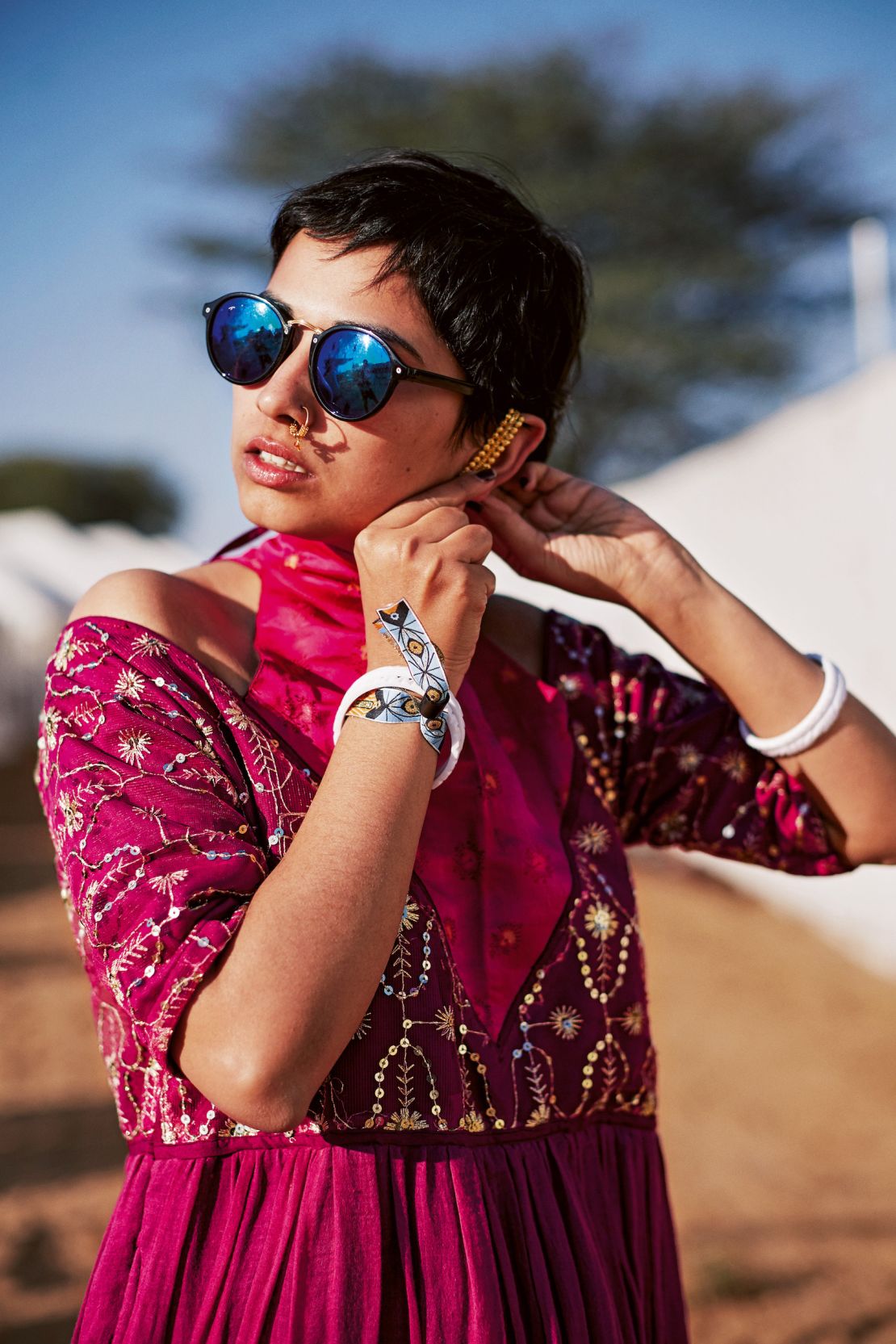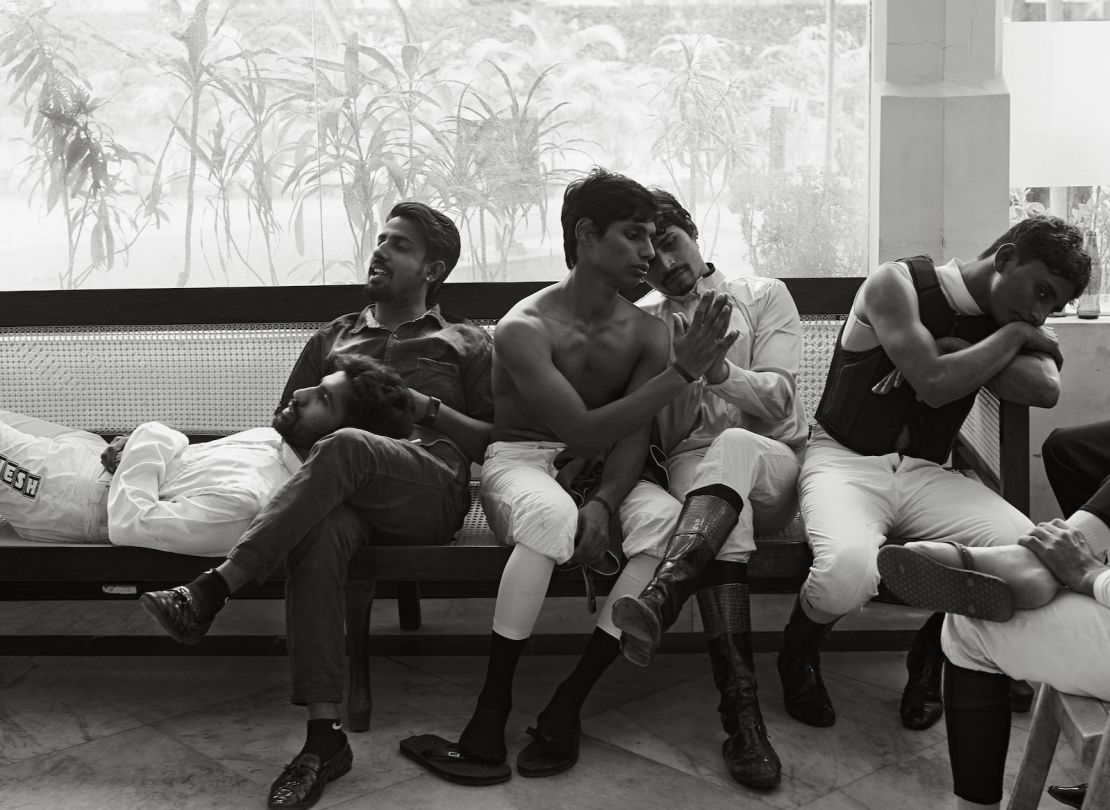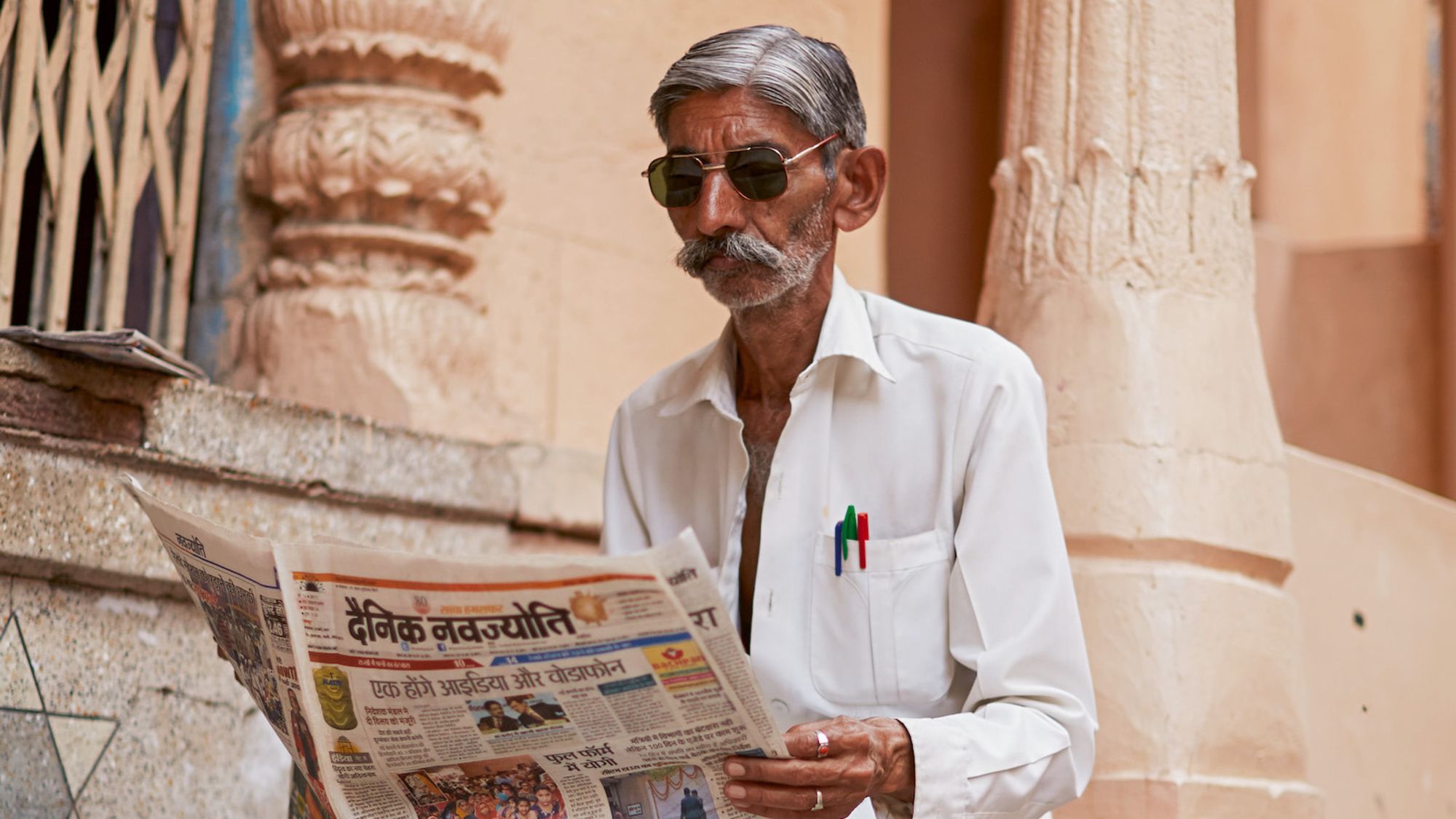One of Scott Schuman’s portraits shows a man in the Indian city of Kolkata with glitter on his face, shining like stardust. But the photographer initially missed this detail.
Schuman had run into the stranger – “a young man in a hoodie who had a certain allure,” as he’s described in the photographer’s new street style book – during an early-morning visit to a flower market on the outskirts of the city. The man had agreed to pose, but it was only after he left that Schuman zoomed into the image to see the shimmer on his face.
“I had missed the drama of the shot,” Schuman writes. “I needed to find him again, but he had already disappeared into the labyrinth of flowers, plants and porters.”
A fashion blogger's guide to Indian street style
In India, you don’t need to go far to find drama. Step out on the streets of any city, and the spectacle of the everyday will ambush, if not overwhelm, you. Sometimes all you need is to turn around – an idea that comes alive in Schuman’s book.
Best known as a fashion photographer and, since 2005, curator of the popular blog The Sartorialist, Schuman came to prominence through his candid street shots of stylish New Yorkers. His fourth spin-off book, “The Sartorialist: India” comprises a series of portraits from the subcontinent, most of which resulted from happy accidents.
Schuman seldom follows the conventions of the fashion photography genre. “I have the eyes of a costume designer,” he said on the phone from his home in New York. “I want to show what clothes can tell us about the person wearing them.”

Schuman’s work finds intrigue in the throwaway details and unspoken stories captured within its frames. His book is interspersed with blank pages, and images bereft of human life – instead of people, we see water tanks, jerry cans and gloves on metal rods looking like spectral hands.
The photographer has been visiting India since 2008 to cover fashion weeks. But some of his most memorable shots came not from runway shows, but while he was driving around in a car, or walking aimlessly in the streets.
“In India, people on the street are more open to being photographed than in Western cities. (Most people seemed) happy about being seen and recognized,” observed Schuman, adding that Italy may be the only other country where he feels people are so at ease in front of camera.
Hybrid style
Indeed, there is a disarming innocence about many of the characters Schuman encountered. From jockeys comparing their palm sizes in Chennai and bare-bodied wrestlers grappling in New Delhi, to surfers in Pondicherry and the men casually hanging out in Mumbai, the photographer’s eye swoops across wide vistas and different walks of life.
At its best, Schuman’s images evoke the great photographers of urban life: the haunting work of Helen Levitt, for instance, who photographed New York in the 1960s, or Brassaï’s chronicles of Paris between the wars. Schuman’s depiction of India, however, is not confined to its cities. Just as it traverses rural, suburban and metropolitan realities, it also straddles starkly contrasting social classes and circumstances.

Schuman feels there’s a misplaced notion in the West that “you cannot have a sense of style if you don’t have money.” The diversity of sartorial choices he witnessed on Indian streets, and the resilience with which people made the most of limited resources, defied this, he said. Be it in big cities or in small villages, the Indians he encountered made “informed personal decisions” about the clothes they wore. “There seemed to be a lot of pride in dressing up,” he added.
Like many post-colonial nations, India has a unique hybrid street style, cobbled together as much by necessity as by intent. It isn’t unusual to pair a “lungi,” a rectangular piece of cloth tied around the waist by men, with a dapper jacket. Nor is a “gamcha,” a small towel used as an accessory, an uncommon sight.
This can result – usually unwittingly – in ironic scenes. Take, for example, Schuman’s photograph of a beefy youth wearing a T-shirt with “Who’s a pretty girl then?” emblazoned across his chest.

In the best traditions of street photography, Schuman mines forces otherwise hidden from our untrained eyes. His India isn’t cloyed with exotic charm, nor it is blighted by poverty to the exclusion of all else.
Rather, he conveys the joie de vivre at the heart of India’s streets, even amid obvious signs of want and misery – the innate sense of style with which people create their individual statements from often meager means.
“My book isn’t an encyclopedia,” Schuman said. “But I want it to make readers curious about India.”
“The Sartorialist: India,” published by Taschen, is available now.
















